
A Phloem Protein Contributes to Aphid Resistance and Heat Stress Tolerance
Aphids are highly destructive insect pests—in addition to robbing plants of sugar-rich phloem sap, they carry viruses that can be deadly to the plant. To reach the phloem sap, aphids must penetrate the plasma membrane of sieve elements. Mature sieve elements, which are virtually empty, translocate…
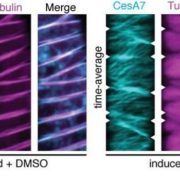
Evidence for Two Distinct Stages in Secondary Cell Wall Formation of Xylem
A hallmark of xylem development is the deposition of secondary cell wall material in specific patterns (reviewed in Patrick et al, 2007). These cell wall deposits structurally reinforce the xylem to withstand negative pressure during water transport and differ in different xylem cell types. While it…
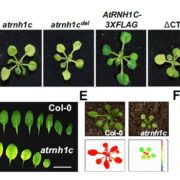
Thrown for a Loop: How RNase H1 and DNA Gyrases Limit R-loops and Maintain Genome Stability in Chloroplasts
We all know that DNA is the stable nucleic acid, in comparison to its flighty, unstable cousin RNA, right? Well, unusual things happen when metabolic processes require DNA to unwind from its stable, redundant double-helical form. For example, during transcription, the RNA that exits RNA polymerase can…
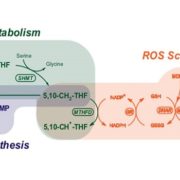
Folate Metabolism Linked to Redox Balance in Arabidopsis
Folates are soluble B9 vitamins with essential functions in all kingdoms of life—both in organisms that produce these vitamins de novo (fungi, plants, and most microorganisms) and in those that do not (animals). As essential cofactors in one-carbon transfers, different folate species mediate the biosynthesis…
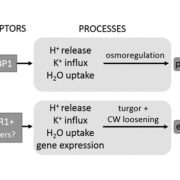
Protoplast Swelling Requires AUXIN BINDING PROTEIN1
Convincing molecular and biochemical evidence exists that members of the TRANSPORT INHIBITOR RESPONSE1/AUXIN SIGNALING F-BOX PROTEIN (TIR1/AFB) receptor family are auxin receptors that trigger auxin-induced gene expression and hypocotyl growth through enhanced expression of SMALL AUXIN UP RNA genes.…

LAZY Genes Control Gravity Responses
Plant architecture is shaped by innate developmental programs as well as by adaptive responses to environmental cues. For example, the primary growth axis of shoots and roots is vertical, with lateral branches adopting some characteristic angle with respect to the main axis. If the main axis is tipped…

Imaging of Light Absorption and Photosynthesis
Due to its ease of use and noninvasive nature, variable chlorophyll fluorescence techniques have become increasingly popular for estimating photosynthetic parameters. Most measurements of variable chlorophyll fluorescence in complex plant tissues and surface-associated cell assemblages (e.g. biofilms)…
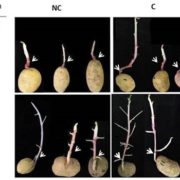
Suc Signals Induce Etiolated Stem Branching
Plant shoot branching is determined by apical dominance, a process in which the apical bud (shoot tip) inhibits the outgrowth of axillary buds further down the stem to control the number of growing branches. In response to this inhibition, plants have evolved rapid long-distance signaling mechanisms…
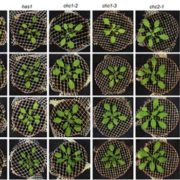
Clathrin and Stomatal Function
Vesicle traffic to and from the plasma membrane plays an integral role in regulating protein localization and activity, membrane composition, and cell surface area. Clathrin is a structural protein that forms a lattice-like complex composed of two H chain subunits (CHC1 and CHC2) and two light chain…

